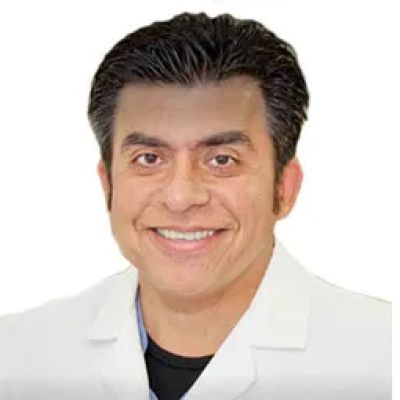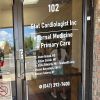Understanding Heart Failure and Its Treatment Options
Heart failure is a condition I’ve personally come to understand more deeply, not only as a healthcare professional but also through personal experiences. A few years ago, a close family member was diagnosed with chronic heart failure, and it completely shifted the way I view this condition. Heart failure is often misunderstood as a complete inability of the heart to function, but in reality, it refers to the heart’s reduced ability to pump blood effectively. This leads to a range of symptoms, many of which can be managed with the right treatment. Through this journey, I’ve learned a great deal about the intricacies of heart failure and the various ways it can be treated, which I want to share with you.

1. What Is Heart Failure?
At its core, heart failure means that the heart is not pumping blood as well as it should. This doesn’t mean the heart stops working altogether, but rather that it struggles to keep up with the body’s demands. There are two main types of heart failure: systolic heart failure (where the heart cannot pump blood efficiently) and diastolic heart failure (where the heart cannot fill properly with blood). Both types can lead to the same symptoms, including shortness of breath, fatigue, and fluid retention, but the underlying causes differ.
In my experience with my family member, we noticed symptoms like swelling in the legs and ankles, as well as frequent breathlessness. These symptoms often worsen over time if left untreated, which is why early diagnosis and intervention are critical. Heart failure is not a single condition but a syndrome that can result from various underlying diseases, including coronary artery disease, high blood pressure, and diabetes.
Atlanta Heart Specialists
atlanta heart specialists
4375 Johns Creek Pkwy #350, Suwanee, GA 30024, USA

2. Symptoms of Heart Failure
Recognizing the symptoms of heart failure early can make all the difference in preventing complications. In my experience, the symptoms can vary in severity and can come on gradually. Some common symptoms include:
- Shortness of breath: This can occur during physical activity or even at rest, especially when lying down.
- Fatigue and weakness: A feeling of extreme tiredness that does not go away with rest.
- Fluid retention: Swelling in the ankles, legs, or abdomen due to fluid buildup.
- Rapid or irregular heartbeat: The heart may beat faster or irregularly as it works harder to pump blood.
In my family member’s case, we noticed the swelling in their legs and an inability to keep up with usual physical activities. If you or someone you know experiences these symptoms, it’s important to consult a healthcare provider to determine whether heart failure or another condition is the cause.
3. Causes and Risk Factors of Heart Failure
Several factors can contribute to heart failure. Some of the primary causes include:
- Coronary artery disease: Blocked or narrowed arteries can reduce the heart’s blood flow, leading to heart failure.
- High blood pressure: Over time, high blood pressure can damage the heart, causing it to weaken.
- Previous heart attacks: Damage to the heart muscle from a heart attack can lead to heart failure.
- Diabetes: Uncontrolled blood sugar can increase the risk of heart failure.
These factors can damage the heart muscle or the vessels that supply blood to the heart, ultimately leading to heart failure. While some risk factors, such as age, can’t be changed, others like high blood pressure and diabetes can be managed with lifestyle changes and medication. Understanding these risk factors is important for prevention and early intervention.
4. Treatment Options for Heart Failure
Fortunately, heart failure is treatable, and with proper care, many people can manage the condition and improve their quality of life. Treatment for heart failure typically involves a combination of lifestyle changes, medication, and, in some cases, surgical interventions.
4.1. Medications
Medications are the cornerstone of heart failure treatment. In my experience, doctors usually prescribe a combination of drugs to help manage symptoms, reduce fluid buildup, and improve heart function. Some common medications include:
- ACE inhibitors and ARBs: These medications relax blood vessels, lower blood pressure, and reduce the strain on the heart.
- Diuretics: These help the body eliminate excess fluid, reducing swelling and shortness of breath.
- Beta-blockers: These slow down the heart rate and reduce the heart’s workload.
- Aldosterone antagonists: These help prevent fluid buildup and lower the risk of hospitalization.
With these medications, my family member’s symptoms improved over time, particularly the fluid retention and shortness of breath. However, it’s important to follow the prescribed regimen closely, as adjustments may be needed based on the individual’s response to treatment.
4.2. Lifestyle Changes
Lifestyle changes are also a critical part of managing heart failure. In many cases, these changes can improve heart health and reduce the progression of the disease. Some key lifestyle modifications include:
- Diet: A heart-healthy diet is essential. I recommend focusing on low-sodium foods, limiting processed foods, and including plenty of fruits, vegetables, and whole grains.
- Exercise: Regular, moderate exercise can help strengthen the heart and improve circulation. Of course, it’s important to consult a doctor before starting any new exercise routine.
- Weight management: Maintaining a healthy weight can reduce the strain on the heart and prevent further complications.
In my family member’s case, making dietary changes and starting a gentle exercise routine under the guidance of their doctor helped them feel better and more energized. These lifestyle changes are essential for managing heart failure and improving overall health.
4.3. Surgical and Device-Based Treatments
For people with more advanced heart failure, surgical treatments or devices may be necessary. Some options include:
- Pacemakers: These devices help regulate the heart’s rhythm and improve heart function.
- Implantable cardioverter-defibrillators (ICDs): These devices monitor the heart and can deliver shocks if a life-threatening arrhythmia occurs.
- Heart surgery: In certain cases, surgery to repair or replace damaged heart valves may be necessary.
In some cases, if the heart failure becomes severe, a heart transplant may be considered. However, these treatments are typically reserved for individuals whose heart failure has not responded well to other treatments. The decision to pursue these options should be made in close consultation with a cardiologist.
5. Managing Heart Failure Long-Term
Managing heart failure is a lifelong commitment, but with the right treatment and support, it is possible to live an active and fulfilling life. It’s crucial to work closely with healthcare providers to monitor the condition and adjust treatments as needed. I’ve seen how regular check-ups, continuous monitoring, and adherence to treatment plans have allowed many people, including my family member, to manage their symptoms effectively and avoid complications.
Ultimately, understanding heart failure, its causes, and its treatment options is the first step toward managing this condition effectively. With the right approach, heart failure doesn’t have to control your life—there are many ways to improve your health and quality of life, and I’m living proof of that.





















Deborah Heart and Lung Center
deborah heart and lung center
200 Trenton Rd, Browns Mills, NJ 08015, USA